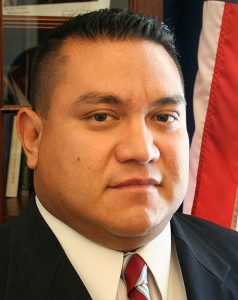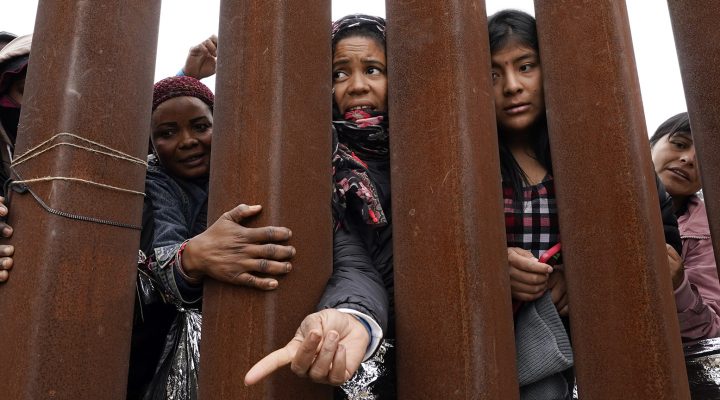A coalition of business, religious and activist groups has released a comprehensive blueprint for immigration reform it hopes will spur Congress to improve border security while preserving the safety and dignity of migrants.
The group of center-right organizations unveiled a border framework April 24 designed to appeal to Democrats and Republicans in Congress by calling for more patrolling and detention at the U.S. southern border as well as enhanced access to due process, shelters and expedited asylum procedures for those seeking shelter in the U.S.

Jennie Murray
“The framework is meant to be a guide for legislation that Republicans and Democrats can craft together, which is what we’ve heard from the strong majority of Americans that they want,” said Jennie Murray, president of the National Immigration Forum, during an online press conference held to introduce the plan.
The Forum is collaborating with the group along with the Association of Equipment Manufacturers, Border Perspective, the Hispanic Leadership Fund, Mormon Women for Ethical Government, the Niskanen Center and State Business Executives. Those organizations also are members of the Alliance for a New Immigration Consensus.
Murray said the framework would reduce unauthorized border crossings, improve the treatment of migrants and recognize the challenges U.S. cities and states experience in welcoming new migrant arrivals.
“It proposes solutions to our border challenges,” she explained. “It creates something that is secure, efficient and humane and recognizes that global migration is at historic levels. (The United Nations) tells us as many as 100 million people might be displaced today and we no longer feel this is a passing trend.”
A year in the making, the document’s release follows months of bipartisan immigration negotiations in the U.S. Senate that crashed due to hardline Republican opposition.
But polling has consistently shown majorities of Americans desire bipartisan Congressional cooperation on immigration reform, Murray said. A recent survey by the Forum and the Bullfinch Group found 86% of registered voters want Democrats and Republicans to work together on the issue. Likewise, 86% of self-identified Republicans and 85% of evangelicals also favor such cooperation.

Kristie De Pena
Americans are increasingly identifying immigration as the most pressing issue facing the nation, said Kristie de Pena, senior vice president of policy at the Niskanen Center, a Washington, D.C.-based think tank focused on immigration reform and other social justice issues.
“We also know that much of that concern is really rooted in the way we process asylum seekers at the border,” she said. “The patchwork approach to processing arrivals has resulted in reliance on decades-old policy instead of investing in the durable or responsive infrastructure that might have allowed the U.S. to better respond to the changes we’re seeing in arrivals today. Successive administrations have relied on temporary crackdowns and deterrence efforts that have led us to this moment.”
Designers of the plan are keenly aware their efforts must cut through decades of negative stereotypes about the border and migrants, said Mario Lopez, president of the Hispanic Leadership Fund.

Mario Lopez
“The most important thing to know is that all of this is designed to increase our security at the border and all those changes,” Lopez said. “The overarching theme is to make sure we are more secure, that our border security is higher than it ever has been.”
To reach that goal, the framework divides immigration solutions into four main sections: modernizing asylum, increasing border personnel and technology, countering drug smuggling, and interdicting human smugglers and traffickers.
The framework proposes modernizing asylum in part by creating a corps of officers authorized to process claims within 45 to 60 days — a significant reduction from current wait times in excess of five years. The policy also creates a higher standard by requiring applicants to demonstrate “significant possibility” of persecution in their home countries, instead of the current “reasonable fear” requirement.
Unaccompanied minors would be protected in the plan by limiting their detention by the Border Patrol to 72 hours, at which time they must be remanded to the Department of Health and Human Services and be assigned a case manager.
The proposal to increase personnel at the border recommends hiring no fewer than 300 Border Patrol officers annually until the force reaches 22,000 (from about 19,500 in 2022). It also proposes the agency hire 2,000 processing agents and establish a Border Patrol reserve of up to 2,500 agents.
The framework recommends additional physical barriers in areas with pronounced gaps. “Physical barriers should include fencing, a border wall system and levee walls, depending on what is the most appropriate solution. These barriers must be effective at preventing entries and focused on high-impact areas.”
The coalition advocates modernizing drug detection personnel and equipment at ports of entry to counter attempts to smuggle fentanyl and other narcotics into the U.S. The plan also advises the U.S. to increase penalties for drug smuggling and human trafficking.
“By prioritizing a secure, efficient and humane border, this framework is intended to create space to address longstanding shortcomings in other parts of the immigration system,” the proposal explains. “Intended to be paired with legislation to address permanent solutions for Dreamers, Temporary Protected Status holders and the legal workforce, this framework bridges gaps and creates a space for a bipartisan legislative compromise.”


